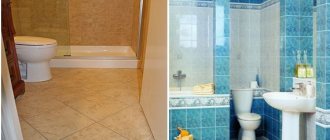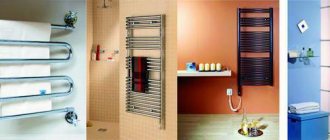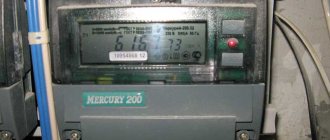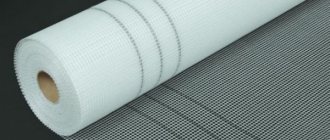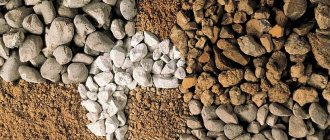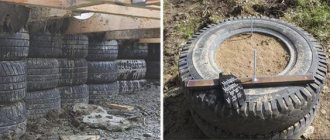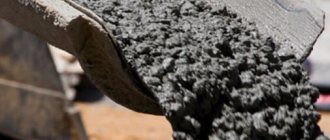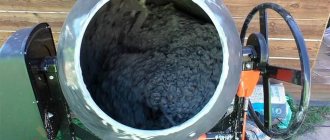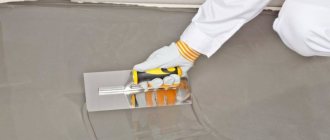Features of facade plasters
Plaster compositions for outdoor use differ from coatings intended for indoor use. They contain additional additives that increase the strength, frost resistance, water-repellent properties and plasticity of the coating.
Cement-based facade plaster is made with the addition of high-strength grades (M400 and higher). The proportions of the main active components also differ. So, when preparing a mortar for exterior work, the percentage of cement and sand will be 1:3, and not 1:4, as is the case with the mixture for interior decoration.
Recommendations for choosing facade plaster
Reading time: 4 minute(s) The exterior decoration of a building is necessary not only to give the building its individuality, but also to improve the performance characteristics of the originally used building material. In comparison with other materials for finishing work on the front surface of a building, facade plaster has a number of advantages, and is also considered the most practical coating of our time. Read the guide to choosing façade paint for plaster on this page.
The photo shows the facade of the house, plastered and painted
Which plaster to choose for the facade?
Before you settle on a certain type of facade plaster, you should understand for yourself which properties are of the highest priority.
The composition of facade plaster includes a cement-sand mixture, which is supplemented with various binding elements that affect the properties of the plaster. There are a huge variety of types of facade plaster, all of them have distinctive features not only in characteristics, but also in the method of application.
As the many years of experience of thousands of builders shows, on average, from 2.5 to 3.7 kg are consumed per square meter of plaster. It all depends on the properties of the surface on which the plaster is applied.
The service life of plaster on a facade depends on the climate zone in which the building covered with plaster is built. If the object is operated in a temperate climate, and it is precisely this climate that “occupies” most of the country’s territory, then facade plaster can last from ten to fifteen years. Read about the benefits of cladding the basement of a house with sandstone here:.
Facade plaster is divided not only into types, but also into types. We should talk a little more about the types of facade plaster.
Types of facade plaster
There are four main types of facade plaster:
- In most cases, facade plaster over polystyrene foam is used as insulation, and it can be applied both to the external surface of the building and to the internal one. The big disadvantage of the material is fragility. When a targeted strike is applied, spider-like cracks will crawl across the entire surface.
- Plastering the facade on brick. This type of finishing building material differs from all others in its high level of lightness. When using this type of plaster, the building does not receive unnecessary load.
- Facade plaster for aerated concrete. The price of this type of plaster differs significantly from all others. Because such a mixture has improved performance qualities.
- Facade plaster for foam blocks. Such a building material will allow the building to “breathe,” and this factor is important when using blocks with a porous surface. Read how to cover the base with corrugated sheets and what are its advantages.
The photo shows the process of applying plaster to polystyrene foam.
Types and characteristics of facade plaster
The main composition of the plaster is a binder, which is supplemented with a number of additives. The properties of the final coating directly depend on the composition of the mixture. Also, the compound complex affects the appearance, cost and technology of applying the material. Today there are a huge number of types of facade plaster, which differ in properties and characteristics. Let's look at the most popular of them:
- Elastic plaster for facades: Finishing the facade of a building is considered the final stage in construction. If the wall is covered with elastic plaster, then:
- the color of its surface can be changed at any time, without damage to the wall
- such plaster will never crack under the influence of environmental weather conditions
- elastic plaster can be given any relief pattern
- Wet plaster of the facade This is a common method throughout Russia for insulating the surface of the walls of a building with a decorative coating. This is a combination of aesthetic properties and thermal insulation qualities. The technology for installing siding for the plinth is described here: https://frontfacade.com/vidy-materialov/sajding/texnologiya-montazha-sajdinga-dlya-cokolya.html.
- Silicone facade plaster This building material is universal for any external surface. This is real value for money. With the help of this plaster, the building body is protected from almost all destructive factors. Special properties:
- High level of vapor permeability;
Protection against microorganisms;
- High strength;
- Increased adhesive properties;
- Dirt-repellent.
- Acrylic facade plaster This type of plaster mixture includes elastic additives, due to which the mixture acquires highly absorbent properties and promotes ventilation of the wall plane. This mixture is suitable for use in regions with frequent temperature changes. In addition, acrylic facade plaster allows you to protect the wall from harmful microorganisms. Another feature of acrylic plaster is its ease of use; manufacturers produce a ready-made solution that simply needs to be applied to the surface of the building.
- Mineral plaster for facades. Mineral plaster is the most economical type of plaster. This is due to the base of the mixture – cement, which is “seasoned” with chemical additives that provide increased moisture resistance. The surface covered with this plaster becomes much stronger. This property only gets stronger over time. Considering the fact that the mineral mixture has a wide color spectrum, it can be used to give the building any color.
- Silicate plaster for the facade If the building was erected using a building material with a porous structure, then a silicate mixture would be an ideal option. This is due to the high level of vapor permeability of the mixture. The composition of this type of plaster includes liquid glass and some auxiliary additives, due to which moisture is removed outside. Silicate plaster is suitable for covering the surface of buildings located near the road surface, because such plaster is completely insensitive to external pollution. Find out more about the technology for cladding a plinth with stone on this page.
The photograph shows a façade with wet plaster applied.
Particular attention should be paid to the huge selection of colors. Silicone facade plaster is not only available in all colors and their shades, but is also designed for a combination of mixtures.
In addition to the types of plaster listed above, there are also:
- facade cement plaster,
- gypsum facade plaster,
- warm plaster for the facade (this type will protect the walls from frost and make the building much warmer)
- as well as a number of decorative plasters for the facade:
- façade Venetian plaster (for those who value a designer approach and individual style);
- marble plaster for the facade (will give the building surface a more cost-effective look)
- cork plaster for facades;
- facade textured plaster, used as a finishing coating after work on insulating the building.
Facade Venetian plaster in the picture
Video
The video below shows all the intricacies of applying plaster to the facade of a building:
In general, today the appearance of a building depends entirely on the taste of the owner. Thanks to the large selection of types of plaster mixtures, you can realize any, even the most original, idea.
Did this article help you? We would be grateful for your rating:
3 2
Primary requirements
Compositions for external use must meet a number of requirements. Facade plaster can be considered as such only if it:
- moisture resistant;
- resistant to temperature changes;
- strong enough to protect the facade from mechanical damage;
- vapor permeable;
- provides heat and sound insulation;
- has decorative properties.
If you live near industrial facilities, the selected facade coating must be resistant to harmful radiation. The abundance of modern finishing compositions allows you to find plaster that meets all of the above points.
Sustainability
It is very important that the type of plaster you choose is resistant to external influences, bad weather, temperature changes, exposure to sunlight, all this affects its durability. But at the moment there is no material that can withstand all of the above factors. Speaking about resistance to any damage, the leader here is acrylic facade plaster, and mineral plaster has the minimum level of resistance to damage.
Acrylic and silicone plasters are also more resistant to the influence of moisture and precipitation. Acrylic ones fade and crack from sunlight, while mineral and silicone ones have unsurpassed sun resistance. Mineral plasters are resistant to temperature changes; other types have an average level of resistance.
Acrylic mixtures quickly accumulate dust and require constant care. Silicone plasters can boast of their resistance to dirt and dust; other types work from time to time. The resistance of the plaster to dust and dirt is influenced by the binding element. Acrylic materials contain resin, which is known to actively absorb and collect dirt.
Acrylic based plaster
Another important property that affects the durability of the coating is its resistance to corrosion. Such resistance can only be ensured by an additional active component added to the base of the material, which blocks the growth of fungus and prevents the appearance of mold. If you choose plaster without this component, then within six months the facade will be overgrown with a green layer of fungus and mold, which will actively multiply and destroy your facade.
Thermal insulation
A layer of any façade plaster helps retain heat inside the building. But if the walls are thin and may not provide proper thermal insulation, a composition with a special filler is needed for exterior decoration.
The so-called “warm” plaster additionally contains polystyrene foam, perlite, vermiculite, foam glass or sawdust. Their addition significantly increases the thermal insulation characteristics of the walls - a 3-centimeter layer of such plaster replaces 15 cm of brickwork.
Soundproofing
Plaster can also serve as a soundproofing material. This property is useful for those who live near a highway, construction site or other noise-producing objects.
But not every plaster mixture can cope with sound insulation. It must contain cement with pumice or slag, or pumice and magnesite. Porous inclusions muffle sound by partially absorbing it.
Of course, you shouldn’t rely on plaster alone; it is effective as an auxiliary tool. If the noise level is high, it is necessary to use additional soundproofing materials - foam boards, mineral wool.
Color and texture
Facade plaster not only protects the walls of the house, but also decorates them. With the help of such finishing, you can achieve an optimal combination of the facade with other elements of the building, select the desired color and texture.
Plaster for external walls is available in a wide range of colors. If you need to create a pronounced texture, use a mixture with the addition of stone chips or ceramic granules.
Also, the surface of the plastered layer is treated with special graters, changing the texture of the coating. This method creates popular patterns such as “bark beetle”, “lamb”, etc. More information about the technology of applying “bark beetle” plaster?
Which decorative plaster is best for the facade is decided individually in each case. Using it, you can create any patterns, even simulating brickwork and natural materials (wood, stone).
Ceresit
Among polymer compositions, Ceresite bark beetle enjoys especially good reviews. But due to the improved quality of finishing, it has a higher cost. In addition to ready-made options, Ceresit products are also presented in the form of dry mixtures. They belong to the mineral category. Diversity also lies in a wide range of textures, so you can choose a large or fine finish.
Ceresit CT 60, CT 63, CT 64
Price:
- 25 kg – 2300-2400 rub.
Description:
- type – mineral;
- consumption – 2.5-4.0 kg/m2;
- grain size – 1.5-3.0 mm;
- frost resistance – 100 cycles;
- service life – at least 10 years.
Pros:
- already ready for use;
- strength and durability.
Minuses:
- No.
Ceresit CT 35 “Bark beetle”
Cost:
- 25 kg – 2300-2400 rub.
Characteristics:
- type – mineral;
- consumption – 3.0-4.0 kg/m2;
- grain size – 2.5-3.5 mm;
- frost resistance – 75 cycles;
- service life – at least 10 years.
Advantages:
- environmentally friendly;
- hydrophobic;
- shockproof.
Flaw:
- high consumption.
- Antibiotics for pneumonia - effective and safe medicines
- How to make rips on jeans
- Estelle hair dye: palettes of colors and shades
Varieties
There are 5 types of facade plaster. They differ in composition, properties and application technology.
Mineral plaster
Mineral plaster consists of slaked lime, cement grade M500 and higher, stone chips, colored clay or other small fillers. Additional additives may also be present to increase resistance to mold and mildew. The plaster is sold as a dry mixture in bags; to prepare the solution you need to dilute it with water.
Apply the composition with spatulas manually or mechanized. The finished solution is suitable for work for about 60-90 minutes. After drying, the coating forms a durable non-flammable layer with heat and sound insulation properties. Granules and additives provide a decorative finish.
Depending on the characteristics of a particular product, mineral plaster retains its properties at temperatures down to -25 or even -50 degrees. The service life of the finish is about 15 years.
But it must be taken into account that this type of coating does not tolerate vibrations well. The use of mineral facade plaster is not recommended near railways, as well as in areas with seismic activity.
Acrylic plaster
In acrylic facade plaster, instead of cement, acrylic resins are used as a binder. In addition to them, the composition contains:
- modifiers that increase strength, ductility and other technical characteristics;
- dyes responsible for the color of the coating;
- filler (sand, granules, stone chips) that creates the surface structure.
Acrylic plaster is sold in the form of a ready-made solution suitable for application. The service life of such coating is about 15-25 years. Plaster with the addition of acrylic is resistant to temperature changes, but easily attracts dirt. However, it is easy to clean by watering it with a hose.
Before applying acrylic coating, dust and remnants of the previous finish must be removed from the wall surface. If there are areas affected by fungus and mold, they are pre-treated with a special antiseptic.
Acrylic plaster sets in 20 minutes, but takes up to 48 hours to dry completely. During this time, the coating must be protected from direct sunlight to avoid cracking. Due to rapid hardening, noticeable joints of layers often form, so the work must be performed by professionals.
Silicone
Silicone facade plaster contains silicone resins, filler, coloring pigments and additives that increase the durability of the material. It is available in the form of a ready-made solution.
The advantages of silicone coating include increased moisture resistance, elasticity, self-cleaning ability, and ease of application. The service life of such plaster is 20-25 years. Its only drawback is its high price.
The solution adheres well to any surfaces that have been previously cleaned of dust and dirt. The application technology and drying conditions for silicone plaster are similar to the recommendations for acrylic mixtures.
Silicate
Another expensive but high-quality material is silicate plaster. It contains the same substances as the mineral one, but there is one additional component - liquid glass.
Silicate plaster is sold in the form of a solution. Just like silicone mixtures, it has antistatic properties, that is, it repels dust. The finished coating has increased abrasion resistance, water resistance and elasticity. Service life – 25 years or more.
One of the disadvantages of silicate plaster is that it hardens too quickly after application. Because of this, plastering can only be done by a professional who can complete the job without mistakes the first time. In addition, silicate plaster requires the use of a special primer.
Cement
Cement plaster is a time-tested composition. This inexpensive type of finishing material has been used in Russia for cladding interior and exterior walls for decades. Its basis, as the name implies, is cement. The composition also includes lime or sand, and other additives that increase strength may be present.
The mixture is sold in powder form and diluted with water immediately before use. Cement plaster comes in different shades, but the color range is very limited. This problem can be solved by subsequent staining.
The obvious disadvantages of cement plaster are the need to prepare the solution yourself and low decorative qualities. The coating is also inferior in terms of service life, on average it is 10 years.
Silicate and silicate-silicone mixtures
Silicate plaster is a difficult-to-use material made from liquid glass or its analogues. Depending on the type and ratio of additives, the solution may have different properties and have different costs. As a rule, it is characterized by high strength, vapor permeability and versatility. The price of silicate compounds is within reasonable limits, but they have not found widespread use.
External decorative plaster using silicate mixtures has its disadvantages:
- lack of elasticity;
- limited choice of colors;
- complex application involving pre-treatment with a special primer;
- poor resistance to UV radiation, the likelihood of rapid color fading.
Silicate-silicone plaster is an attempt by manufacturers to combine the advantages of different materials. However, according to the reviews of most consumers and the opinion of regulars of thematic forums, the attempt was unsuccessful. After all, the most important disadvantage - the high price - could not be avoided, and the properties of “silicone” and “silicate” were reproduced mediocrely. Therefore, silicate facade decorative plaster for exterior use is of questionable feasibility.
Remember that the best option, in terms of price-quality ratio, remains a reasonable combination of different materials.
Wet plaster technology
Many people have probably heard the term “wet plaster”. This means plastering over a multi-layer “pie” of primer, insulation and reinforcing mesh. This façade finishing moves the dew point outside the house, absorbing condensation. As a result, the housing is dry and warm, creating an optimal microclimate.
The thickness of the layers and their sequence may vary, but most often the order is as follows:
- Base (wall).
- Fixing primer.
- Adhesive layer.
- Thermal insulation material fixed with dowels.
- Reinforcing layer.
- Primer to improve adhesion.
- Decorative plaster.
It is very important to choose a suitable thermal insulation material. Which insulation is better for a facade under plaster? A good option in this case is OSB boards, mineral wool or polystyrene foam. They are moisture resistant and reliably retain heat.
Plaster application technology
The process of applying the decorative coating “bark beetle” consists of two main stages: distributing the mixture over the surface and forming a pattern using a tool. But before this, it is necessary to carefully prepare the base, because the adhesion strength of the plaster to the base and, as a result, the durability of the finish depends on this.
Preparatory stage
Decorative plaster should be applied only to dense and smooth surfaces that are not subject to shrinkage. Walls made of brick, concrete, or cinder block are best suited for this, but for wooden houses it is preferable to choose other finishing methods. The basis for decorative plaster is usually leveling cement plaster, which is applied to the walls themselves or to the insulation layer. In some cases, bark beetle can be applied over façade paint.
Preparing the façade for finishing
So, first, dust and dirt are cleaned, oil stains are removed with a solvent, and fungus-affected areas are cleaned and treated with an antiseptic. All recesses, cracks and chips are sealed with cement mortar. Next, take a rule at least 2 m long and apply it to the wall in different places to check if there are deviations from the plane. If deviations are more than 2 mm, additional leveling with plaster or putty mixture will be required.
Sealing cracks
Alignment of facade walls is carried out if necessary
A facade painted with oil paint can be thoroughly sanded over the entire area with coarse sandpaper, provided that the paint adheres firmly and has no defects.
After the base is cleaned and leveled, it is primed. Some master plasterers claim that it is not necessary to prime external concrete and cement-sand bases, and simply moisten the surface with water before applying the plaster. This approach is incorrect and leads to a reduction in the service life of the coating, because it is the primer that strengthens the upper layers of the base and ensures high-quality adhesion of materials. It is advisable to use primers of the same brand as the plaster itself. As a rule, manufacturers indicate on the bark beetle packaging which primer is preferable to use.
Ceresit CT 16. Primer for decorative plasters
Advice. To prime the surface, it is recommended to use strengthening compounds with quartz sand. They penetrate deep into the pores of the base, impart water-repellent properties, and maximize adhesion. If you plan to use tinted plaster, then the primer should also be tinted to match the finish so that after the patterns are formed, the base does not show through.
The primer is applied with a roller or brush, evenly working the walls from top to bottom. This should be done in dry, warm weather, on a dry surface. For a solid base, one layer is sufficient, for a dust-forming base - 2 layers. After this, the walls should be completely dry; on average, drying takes from 4 to 6 hours.
Facade priming
Treated surface
Now you can apply the plaster.
When choosing a dry mixture, you need to pay special attention to preparing the solution. If you do not yet have experience in plastering, do the mixing in small portions, since the plaster dries quickly and cannot be diluted with water. Read the instructions on the package, be sure to remember the proportions of water and dry powder, because the quality of the solution depends on this.
Step 1. Take a mixing container (a regular 10-liter bucket will do), pour in the specified amount of water, the temperature of which should be between 15-20 °C, and gradually add the dry mixture. On average, 1 kg of mixture requires 200-250 ml of water.
Gradually add the dry mixture into a container of water
Step 2. Mixing is done with a drill with an attachment, since it is difficult to achieve a uniform consistency manually. You need to mix at low speed, completely immersing the mixer in the solution so that no air bubbles form.
Mix the mixture with a drill and attachment
Step 3. After 2-3 minutes, when the solution becomes paste-like and homogeneous, turn off the mixer and let the plaster sit for 5 minutes. Then mix again and begin application.
Ready-to-use solution
If you need to give the plaster a certain color, you should purchase the desired shade in advance and add it when mixing the solution. In this case, mix especially carefully so that all the pigment is dissolved and no streaks or individual inclusions remain. Manufacturers recommend tinting only ready-made compositions based on acrylic and silicone, and painting plasters made from dry mixtures with facade paints after drying.
Tinting decorative plaster
Prices for primer for decorative plasters
Primer for decorative plasters
Video - Tinting decorative plaster "Bark beetle"
Applying plaster
To apply the solution you will need a metal trowel 30 cm long and a narrow metal spatula 10 cm wide.
Apply the solution to the grater
The solution is applied with a narrow spatula on a trowel, after which the tool is placed against the wall at an angle of 30 degrees and the plaster is distributed in an even thin layer to the thickness of the filler grain. Try to perform a minimum of movements in one area, and maintain the same pressure all the time. It is most convenient to apply the mixture in narrow vertical stripes.
The next strip is applied so as to overlap the edge of the previous one by 5-7 mm. The solution needs to be stirred periodically, as the filler tends to settle to the bottom. During the work, individual areas should not be allowed to dry out, as this will reveal the transitions. If the area is large, it is better to work together with an assistant: one person will apply the plaster, the second will mix new portions of the solution.
Applying plaster
Since the pattern is formed on wet plaster, each wall is processed separately from corner to corner. If you decide to first apply the solution to the entire facade and then start grouting, you will not succeed, since the first sections will already be dry.
Formation of texture
The creation of the pattern begins 10-20 minutes after application (depending on the composition of the mixture). The readiness of the plaster for grouting can be determined by the lack of shine on the surface or by touching the hand to the wall - if the mixture does not stick to the palm, it’s time to start grouting.
Take a plastic grater, apply it to the surface, press it a little and perform uniform movements in one direction. As with application, the walls are treated in sections no more than 1.5 meters wide. Movements must be careful, there is no need to rush, and you cannot drive in one place several times. The joints of two strips must be moistened with water.
Pattern Formation
If you do not have time to complete one plane, take masking tape and stick it along the line where the plaster layer ends. Then apply a little solution onto the tape, form a pattern, and immediately remove the tape along with the remaining plaster. When you can continue working, the first step is to apply masking tape along the edge of the now dry plaster, and then begin to apply the solution. This technique will avoid overlapping layers, as a result of which the transition will be almost invisible.
There are many options for forming texture, the most popular of which are:
- “rain” - movements are performed from top to bottom strictly vertically;
- “diagonal rain” - the grater is moved from the upper left corner to the lower right;
- “carpet” - when rubbing the coating, vertical movements alternate with horizontal ones, resulting in the formation of a cross-shaped texture;
- “lamb” - rubbing is performed with short circular strokes, and the resulting furrows resemble sheep’s wool;
- “cork” - rubbing is performed with a foam grater, making short circular movements in one direction and pressing the tool with force to the surface.
Texture formation options
Finishing coating
It usually takes about 2 days for the plaster layer to dry (look for exact information on the packaging of the mixture), and before this no work can be done on the surface. After the specified time has elapsed, it is advisable to sand the coating with the finest sandpaper to remove adhering crumbs of the solution and level the surface. If acrylic tinted plaster was used, the finishing work is completed.
Sanding walls after puttying
When using a cement mixture, painting is done to increase decorativeness. Water-soluble paints based on silicone and acrylic are best suited here. So, after sanding, the walls are cleaned of dust and treated with a deep penetration primer in one layer. After the surface has dried, begin painting. If you prefer to paint with a roller or brush, choose tools with long bristles - this will allow you to properly paint all the grooves and grooves. Apply the paint in two layers - the first with vertical strokes, the second with horizontal strokes.
Painting bark beetle plaster
Dyeing process
Recommendations for finishing with plaster
Finishing the facade with plaster should be carried out at temperatures from +5°C to +30°C and air humidity not exceeding 60%. Only under such conditions will the quality of the coating meet the specified characteristics. That is why you need to start finishing in dry, warm weather and preferably calm. Strong wind, as well as direct sunlight, negatively affects the plaster and contributes to its cracking. If the façade is exposed to direct sunlight during the day, apply the plaster in the late afternoon so that the coating can harden and dry sufficiently overnight.
For beginners, it’s better to start with the most inconspicuous part of the wall, since not everyone can accurately apply a design right away, and it’s no longer possible to correct flaws on dry plaster. It is advisable to choose paint, primer and decorative putty from one manufacturer - this guarantees maximum compatibility of materials and quality of coating.
Finishing the facade of the house with plaster in two shades
Finishing the facade with decorative plaster
Video - Applying decorative bark beetle plaster
Advantages and disadvantages of facade plaster
Facade plaster, like any finishing method, has strengths and weaknesses. Its various types differ significantly from each other, but it is still possible to highlight the qualities common to this group of facing materials.
The advantages of plaster for exterior use include:
- fire resistance;
- thermal insulation properties;
- resistance to temperature changes;
- the ability to perform work without special equipment;
- light weight of the material;
- quick receipt of decorative coating.
But there are also disadvantages. The resistance of plaster to mechanical stress is lower than that of ceramic panels, facing tiles and other similar materials.
If we are talking about decorative coating, its creation will require professional skills. In addition, work can only be done at temperatures above +5 degrees, and complete drying with a thick layer of plaster will take a lot of time.
Advantages and disadvantages
It is impossible to say unequivocally that all types of material have the same advantages or disadvantages - it all depends on the composition, purpose and properties of the plaster, but some features can be highlighted.
Advantages:
- Ecological cleanliness. Thanks to the use of natural, non-toxic ingredients.
- Fire resistance. The coating does not burn and does not contribute to maintaining the combustion process.
- Easy to use. The façade of the building is easy to repair and clean.
- Frost resistance.
- Thermal insulation. Provides heat conservation in the room.
- The work can be done manually, or without the involvement of specialists.
- Aesthetic beauty.
- Modest weight. The weight of the plaster is very small, so additional repair work and strengthening of the foundation are not required.
Flaws
- Low mechanical strength. Low resistance to mechanical stress is possible if reinforcing mesh was not used and facade plastering technology was not carried out. Then chips and cracks may appear on the surface of the building.
- Labor intensity of installation work. The complexity lies in the need to strictly follow the recommendations for applying the mixture and professionalism. Creating an invoice takes a long period of time.
- Dependence on seasonality forces us to focus on a temperature regime of at least +5 degrees, which limits the timing and possibilities of repair work. If this requirement is not met, the applied solution will take a long time to dry and will not adhere well to the base.
- The material is expensive - the cost of decorative plaster is higher than regular plaster.
Return to content
How to choose?
The choice of facade plaster depends on the material of the walls of the task, the operating conditions of the coating and the requirements for it. Whether to purchase a composition with granules or a smooth texture is a matter of taste. The same applies to color design.
If you think that the house needs additional insulation, pay attention to compositions containing perlite, vermiculite, foam glass, etc. For those who want to repair the facade less often, plaster with increased strength is suitable - silicate or silicone.
Ready mix
In cases where you need to do work quickly, and there is little experience in this matter, it is better to purchase ready-made compounds. With them, there is no risk of making a mistake when mixing the solution. The ready-made mixture also has other advantages - convenient storage and transportation.
Selection of plaster for a specific surface
The answer to the question - which plaster will be better for the facade, directly depends on the material of the walls. Even a high-quality plaster composition may not live up to expectations when applied to an unsuitable base.
Optimal combinations of types of facade plaster and base material:
- Brick walls - cement or silicone mixture.
- Aerated concrete is a silicate or silicone composition.
- Wooden walls - silicate plaster.
- Insulation boards are an acrylic-based composition applied over a reinforcing mesh.
- Other options are silicate mixture.
Cladding with decorative plaster is a modern, inexpensive and reliable way to decorate the facade of a house. If you follow the application technology and the base material matches the composition of the mixture, you will definitely get a durable and decorative coating. If you plan to create a complex pattern, but do not have the necessary skills, you should turn to professional builders.
Author: Yana Semich, especially for xFasad.ru
Peculiarities
For interior work, the industry offers ready-made mixtures:
- acrylic;
- silicate;
- silicone;
- polymer cement.
Only polymer-cement compositions are sold in dry form. They must be prepared before use. To do this you need a low speed mixer, a bucket, and water. The main condition for high-quality plaster is a clean and smooth wall. To work, you need a stainless steel float and plastic grout.
It is important that the wall is level
back to menu
Hallway decoration
To create a unique interior, it is not necessary to plaster the entire room. It is enough to select one or several walls. In order for the room to look aesthetically pleasing, it is necessary to remember that the “Bark Beetle” is not suitable for every style. For a small hallway, you should take into account the following: vertical stripes make the room higher, and horizontal stripes lower.
Tip When selecting colors, try to use no more than three. The hallway is where guests find themselves. In most cases, it does not shine with large areas and natural light. Therefore, when decorating the hallway, it is recommended to use warm pastel colors: beige, light brown, light orange.
Try to choose colors that are not too bright
Decorating the hallway in the “Loft” style
This style of room decoration seems primitive, but in terms of design costs it is one of the most expensive. The more the room resembles a workshop or utility room, the cooler the design. The texture of the wall with deep grooves is what the Loft lacks.
A room that looks more like a utility room
back to menu
Bathroom finishing
This plaster mixture is very resistant to wet conditions and its use for bathroom decoration is quite justified. But it should be remembered that “Bark beetle” is not a ceramic tile. The bathroom should have good ventilation. The walls must be completely dry after moistening.
A good combination of shades for the bathroom
When plastering, consider the material of the base of the walls: stone, concrete, brick or plasterboard. If the walls are plasterboard, they must first be plastered with cement mortar over a reinforcing mesh. The bathroom has many plumbing fixtures plated with chrome or nickel. Therefore, the Techno style is best suited. Walls covered in two tones using metallic shades will highlight the Techno style in the bathroom.
back to menu
Bark beetle in the bedroom
In order to make an original bedroom design, it is enough to plaster one of the bedroom walls in a minimalist style.
Minimalist style for the bedroom
Advice To decorate rooms inside a building, it is recommended to use acrylic, silicone or silicate plasters, which are ready for use immediately in buckets. You just need to add color and stir gently.
Silicone is the most expensive, but its performance qualities offset the high price. After drying, the surface becomes shiny and will last for decades.
Chalet style bedroom
Unusual, practical and affordable
To decorate a bedroom in a rustic style, it is enough to decorate one wall with a textured layer. The bark beetle will come in handy in this case.
The rustic style is characterized by:
- a lot of wood;
- stone;
- textured plaster;
- fireplace.
The wall made of stone blocks near the fireplace looks interesting, the surface of which is eaten away by a bark beetle. Local lighting of the surface will cast fancy shadows, emphasizing the relief structure.
back to menu
In the living room
The living room is the central room in the house. Family gathers here for the holidays and receives guests. This room should be a source of pride for the owners. Smooth, white walls have long been out of fashion. The textured surface of the walls will help add zest to the design of the room.
A highlight in the design of the living room
Pay attention to the use of local lighting to accentuate the plastered wall. The living room should have a festive look, so it is recommended to paint it in two colors. When painting, there are two options: the base color is light or dark. It all depends on taste. The second color should be contrasting to the first.
Tip: To focus the attention of guests on some art object, decorate a small panel in the center of the wall. Here you can hang a bright painting or photograph and the living room in the art deco style is ready. back to menu
Examples of small and large rooms
Bark beetle plaster in the corridor also has a right to exist. The corridors in the apartments are not very wide. Sometimes it is difficult for two family members to stretch in a narrow space. There is always a risk of rubbing yourself against the wall. The bark beetle is so strong that repeated touching is of no use to it.
Tip To keep this small room looking fresh all the time, leave some paint after finishing and touch up worn areas on the walls from time to time.
Decoration of the staircase
This is the structure you get if you combine horizontal and vertical movements. To obtain a more vivid effect, it is necessary to use mixtures with filler with a diameter of at least 3.5 mm.
return to menu return to menu
